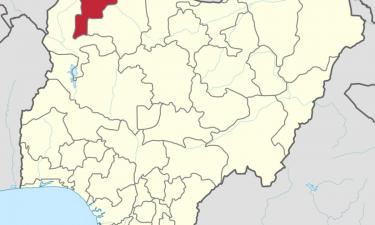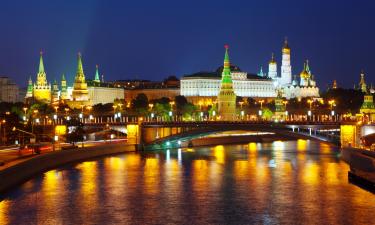One day the Caspian monsters will come back
When the USSR for the first time tested these half planes – half ships in the Caspian Sea, the US militaries could not understand the photos they got from the satellites. From the engineering point of view of that time such a thing were impossible. The Americans nicknamed unfamiliar object "Caspian monster." In Russia they called it “screen plane”. Correspondent PravdaRu met with the person who directly deals with the resurrection of these “dinosaurs”. At least baby monsters already fly…

Gennady Pavlovich Shevyrev, the expert of the Omsk based "Polet", the company which is likely to set up serial manufacturing of the new screen planes, at the exhibition VTTV-2007 represented the project of the designer Vyacheslav Kolganov, the author of the only really flying screen plane "Ivolga".
“Screen plane” is a winged surface effect vehicle (WSEV), a combination of an aircraft and ship. It can fly on -0.5-2 meters above the sea level used the lifting effect of the water surface – screen. The screen planes Lun and Orlenok tested in the Caspian Sea in 80s had 500 km/h speed. These huge screen planes designed by KB Alexeeva and built in Nizhni Nogorod were capable of carrying enough missiles to attack an aircraft carrier grouping. Unfortunately the development came too late. The USSR disintegrated and in 90s despite some attempts to revive the project for the sake of emergency services failed.
In the past couple of years again hope appeared that unlike dinosaurs the Caspian monsters are not dead. At least today several Russian designers are suggesting “baby monsters”, just 7-25 seats size. The most advanced development in this sphere is EK-12 Ivolga (Oriole) by the JSC TREK (designed by Vyacheslav Kolganov). Two years ago the model of the first Russian screen plane made a furor at VTTV-2005. After years of negligence and bitter disappointment Russian industry demonstrated that screen planes are not forgotten for ever. Then Ivolga won a special diploma and raised a lot of interest.
Ivolga is positioned as all-weather highly efficient vehicle with no-contact movement above the surface at the height of 0.2 to 3 meters under normal atmospheric conditions. The winged surface effect vehicle is intended for multiple purpose use (passenger, transportation, rescue) in the internal waters and in the coastal sea zone at the distance from the coast less than 20 miles, and from the shelter place less than 100 miles. The vehicle has 14 seats. At the weight of up to 3700 kg the winged surface effect vehicle "Ivolga" has the movement distance of up to 1500 km at the cruiser speed of 180 km/h.
According to Gennady Shevyrev today there is one “experimental machine” which is undergoing testsat the “Moscow Sea” (water basins near Moscow) done by the Research Institute TsAGI. The screen place is just few steps from serial manufacturing from technical point of view. It needs officially recorded results of the plant’s tests to start certification tests. Ivolga is to be certified under the Russian Sea Register. It does not need air certificates, as it is operated above the water areas. This is better for the designers, because air certification is longer and more difficult. Today Ivolga has only “technical references” from the Academy of Sciences and TsAGI.
Ivolga is really multi-purpose. Today it is positioned as passenger and rescue vehicle because of the marketing considerations. Theoretically it is better to speak about the size. The flying machine has 14 seats. Successful tests made the authors think about 25 and 50 seats versions. It is most likely that the first customers will be Russian border guards. At least they have been closely following and assisting the tests. Another perspective buyer is the Ministry of Emergencies, who also used to express interest in this development.
Screen plane consumes considerably smaller capacity of engines in comparison with the existing vehicles. From the point of view of economic considerations "Oriole" is more economical than cars by 30%, high-speed air cushion vessels - 2 - 4 folds, planes and helicopters 4 - 7 folds. "Ivolga can be used in the boggy and flooded districts, on the internal water reservoirs and rivers including those covered with ice and snow, as well as in the sea with the 3 - 4 grades storm. The winged surface effect vehicle "Ivolga" can be based both on the ground and on water surfaces with an independent exit without berths, hydro-descents and other coastal devices.
"Ivolga" is simple in the maintenance which can be done by the crew. It is equipped with the engines and systems from serial BMW or "Volga" cars. "Oriole" is simple in control and has low requirements to the crew, which allows it for the mass consumer. It is as simple as boats and yachts. The easily disassembled “Ivolga” allows transportation by typical railway platforms and trailers or by IL-76 aircraft. Thus the central part is transported without essential dismantle of the power unit and equipment.
According to the independent experts “Ivolga” outperforms all other Russian and foreign designs. Today only China, US, Germany and Australia develop their own screen planes. However, Russian designers are sure that foreign competitors considerably lag behind. Noteworthy, Kolganov’s refused from the Chinese “assistance”. Hopefully small “oriole” will be just the first bird which will be followed by a huge flock of bigger sisters.
Yuri Seleznyov
Subscribe to Pravda.Ru Telegram channel, Facebook, RSS!





